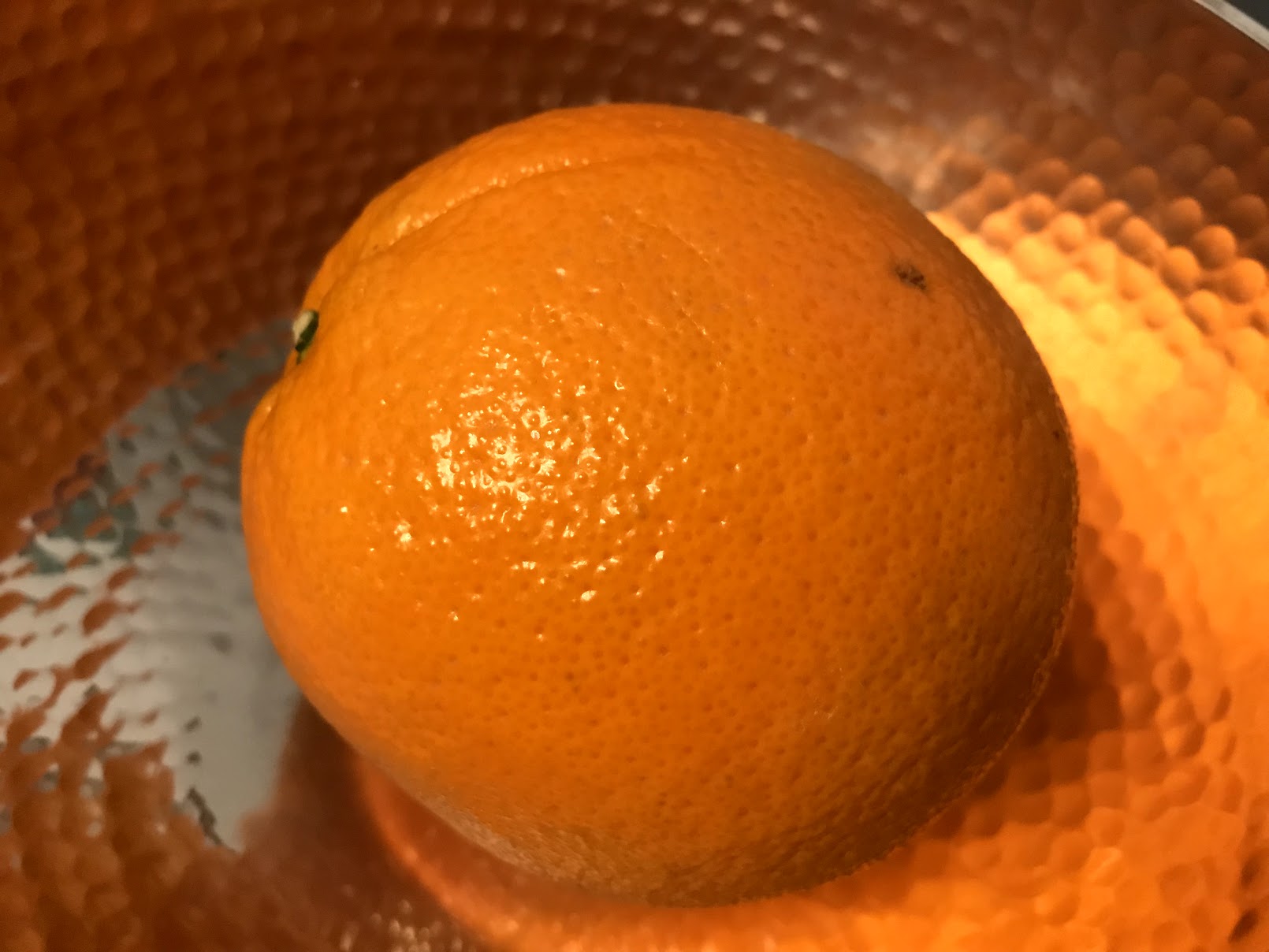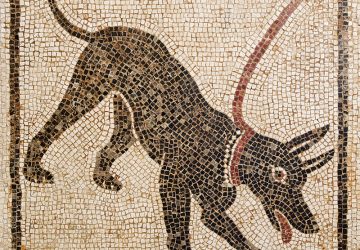
Orange: The Edible and the Eyesore
Whether the first thing that comes to mind is a gaudy wall color or a delicious round citrus fruit, we native English speakers are all very familiar with word orange. Both the word and the fruit have a history going back centuries, and in the case of the fruit itself, a couple of millenia. The original version of the word for orange is thought to have come from a Dravidian language and then showed up in Sanskrit as the word for an orange tree. From there, it appeared in Persian and Arabic later on in the form “naranj”. By the time it entered into French and English, the beginning “n” had been dropped. The usage of orange as a color was unique to English, with the first known reference around 1512. Prior to this introduction, orange things may have been called red, or yellow-red, or by the word “saffron” which was considered close to same color.
Oranges (specifically sweet oranges) are fascinating in that they also did not occur naturally in the wild. It is believed that they were first cultivated in China prior to 314 BC, and were a hybrid of a mandarin and a pomelo. Since then, orange growing has expanded across the globe. It was spread in large part due to the efforts of Portuguese explorers in the 15th and 16th centuries, who planted orange trees all along the routes they travelled/conquered. Oranges were a key food for sailors, as they provided the nutrients needed to combat scurvy. Today, Brazil, not China as I would have thought, is the top producer of oranges worldwide.

There are a variety of ways oranges show up in everyday life. Recently, I learned that there is a family tradition still practiced by many families in the USA that involves putting oranges in stockings at Christmas time. There are several theories as to where this tradition came from, some dating back to stories tied to St. Nicholas and others citing hard times in the Great Depression, with oranges being an affordable welcome treat. Regardless of its origins, it seems to be a heartwarming and fun shared family experience to have during the holiday season.
Oranges show up in all sorts of literature and media as well, from the dystopian novel “A Clockwork Orange” by Anthony Burgess, to a popular Netflix show “Orange is the new Black”, to my personal favorite: Paddington’s favorite snack, orange marmalade, from the films and children’s book series. The color orange can be found in flags (national color of the Netherlands), or in traffic jams, or on your bathroom walls or kitchen table. We all probably have strong opinions on orange, either from a visual or tasting perspective. It may have taken our ancestors awhile to come up with the word for it, but I don’t think it’s going away again any time soon. So enjoy a bit of extra historical knowledge now added to your memory the next time you see the flashy jacket or hat, or when you take that next scrumptious bite of this delightful citrus fruit. If you are feeling adventurous, try whipping up some Orange Marmalade (courtesy of Food Network) or feel free to try this recipe for a hot cup of Cranberry Orange Apple Cider on a cold winter day.
Cranberry Orange Apple Cider
1 carton (~.5 gallon) Simply Orange juice (or your brand choice)
1 gallon Cranberry Apple juice (or other juice of choice and add apple juice separately)
3 cinnamon sticks
1 tsp ground ginger
Fresh orange slices (for garnish)
Add all of your juices and spices to a slow cooker (crockpot) and cook on Low for 6-8 hours. Serve warm and garnish with fresh orange slices.







Comments
Your recipe sounds delicious!! And very healthy!